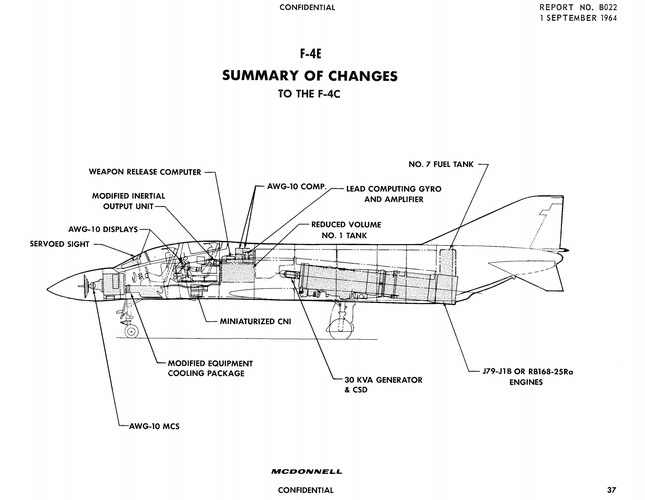Canadian ASW should have got long range Nimrods and Merlins or at least more P3s.and SH60s to replace older types.
We're a fair way from
Arrows and alternatives here but, yeah, a more rational approach to airborne ASW platforms would certainly have helped. There were two major procurement programmes at issue here.
1) Long-Range Patrol Aircraft (LRPA) contest to replace the CP-107
Argus; and
2) Sea King Replacement (SKR) programme to replace the CH-124 fleet
LRPA ran from 1971 to 1976. The 'primes' were Lockheed, McDonnell Douglas, Boeing, and Hawker Siddeley. In March 1973, the 'primes' submitted proposals - Boeing 720-ASW (LRPA 'CP-137'); Lockheed
Orion; McDonnell Douglas DC-10 LRPA; and HSA
Nimrod. Canadair would act as local partner regardless of which submission won the LRPA contest.
Boeing and Lockheed were short-listed with MDC's proposal seen as immature and HSA's as offering insufficient industrial benefits to Canada. The
Nimrod bid was hardly helped by HSA's history with the GoC. And the DHC acquisition negotiations with HSA were also fresh on Cabinet's mind. HSA probably saw Ottawa as being overly demanding, the GoC definitely regarded Hawker Siddeley management as arrogant and self-serving.
Of course, HSA brass weren't the only ones. Washington was putting pressure on (through its ambassador) to skew LRPA toward Lockheed (which was in serious financial distress at the time). This was also a better fit (than HSA) with the US-Canada Defence Production Sharing Arrangement. Although Boeing offered all kinds of deal-sweetners, Lockheed was awarded the LRPA contract ... resulting in the CP-140
Aurora (and, eventually, the CP-140A
Arcturus. In a nutshell, Lockheed Aircraft Corporation was bailed-out and the
Nimrod never stood a chance in the LRPA contest.
SKR ran from 1975 to ... well, see rough timeline in footnote [1].
The SH-60 was considered and rejected. The Canadian requirement was for a shipboard helicopter in which crews could stand fully upright when the aircraft was airborne. The SH-60 couldn't meet that requirement.
The British
Merlin variant was submitted but, perhaps for GE continuity, DND was more interested in the Italian T700-powered EH101. If you're looking for Brit content, I'd suggest the Westland
Sea King (airframe still in production until 1995, IIRC) With 20/20 hindsight, Canada could have swung a deal with Westlands to assemble
Sea King as interim replacements for the CH-124 fleet. DND could then have sat back with comparatively sprightly shipboard helicopters awaiting the chopper of their dreams.
_____________________________________
[1]
Sea King Replacement (SKR) Timeline and Name-Changes
- 1975: SKR begun as component of Canadian Patrol Frigate project
- 1978: New ASW helicopters calved off from the larger CPF project
- 1985: SKR rebranded as the New Shipboard Aircraft (NSA) project
-- Note that the SH-60
Maple Hawk was a rejected NSA contender
- 1991: New SAR Helicopter Requirement added to the NSA Project
- 1993: NSA winner EH101 (as CH-148
Petrel & CH-149
Chimo)
- 1993: NSA contract cancelled by new Jean Chrétien government
- 1994: NSA rebranded as the Maritime Helicopter Project (MHP)
- 1994: Renewed NSARH (CH-113A replacement programme)
- 1998: NSARH winner = utility EH101 (as CH-149
Cormorant)
- 2004: MHP winner Sikorsky H-92
Superhawk/CH-148
Cyclone
- 2008: November; first flight of the H-92/CH-148
Cyclone
- 2010: Sikorsky-owned H-92 begins shipboard trials aboard CPF
- 2010: Sikorsky's late fees (CAD 89M) for a 'compliant' MHP waived
- 2011: 'Interim Maritime Helicopter Project' (IMHP) announced
- 2015: June; delivery of 6 x Block 1 IMHP CH-148
Cyclones
- 2018: June; IOC for the IMHP CH-148
Cyclones
- 2021: November; final Block 2 (full MHP) CH-148 accepted
- 2023: Project closeout for Maritime Helicopter Project (MHP)?
I'm hoping that this close out date is merely aspirational. It would be
so much more fun if SKR/NSA/MHP hung on long enough to reach its 50 year golden anniversary!


